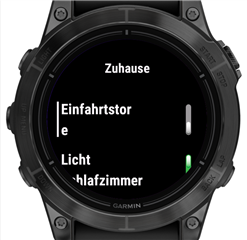I'm thinking about a new home automation app where the Menu2 component could be very useful.
I would likely need three types of menu items:
-
A menu item that opens another menu, for building hierarchical menus - probably just a plain
MenuItem. -
A menu item representing an on/off switch - likely using
ToggleMenuItem. -
A menu item that displays some information and opens a view to manipulate that data. For example, showing a thermostat's current temperature and allowing adjustments - this would probably require a
CustomMenuItem.
On paper, it looks like everything I need is already available. However, before diving in, I want to check: do all of these elements actually work reliably?
In the past, I've run into issues where SDK features seemed fine in the simulator but failed in real-world use. So I figured I'd better ask first.

